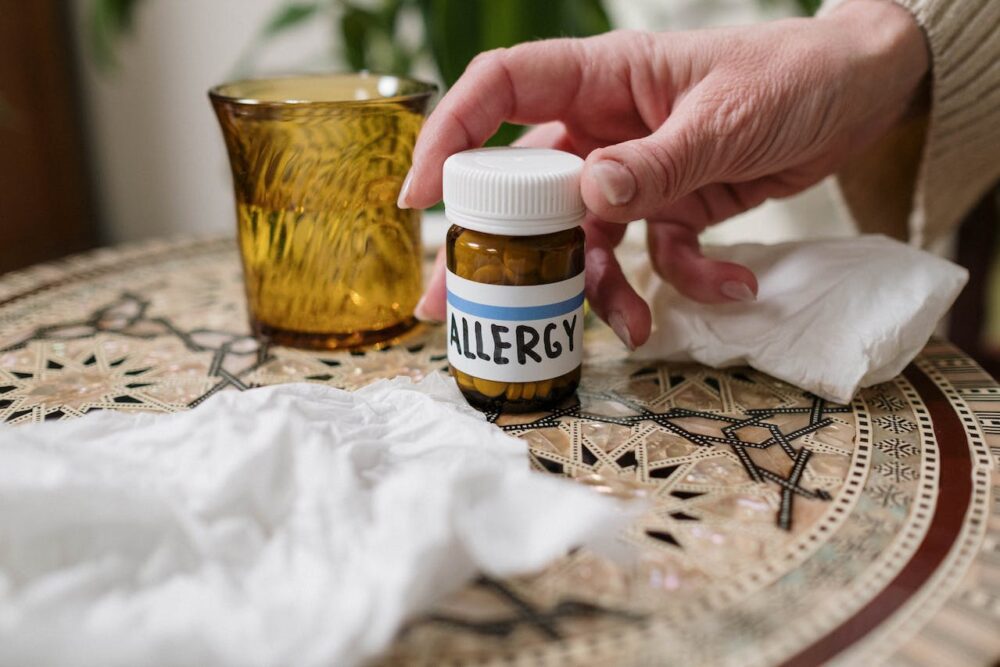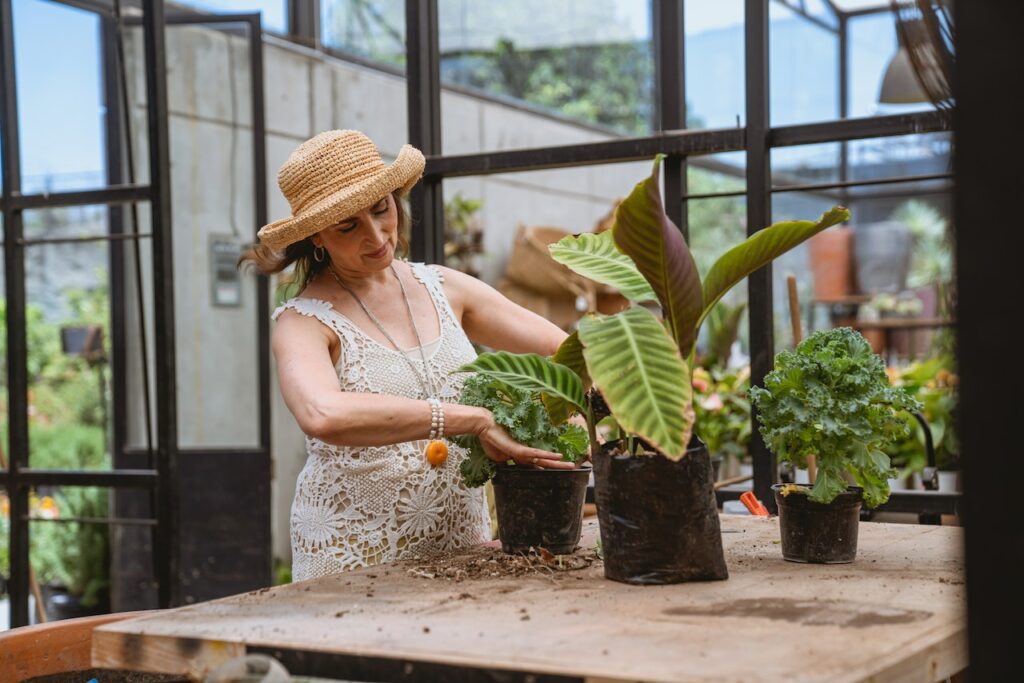How Can Seniors Manage the California Allergy Season?
Welcome to a lively excursion for dynamic seniors in America who are embracing the golden years with grace. As we travel through the seasons, particularly in California’s magnificent landscapes, we frequently face a little but substantial challenge: seasonal allergies. But worry not—this challenge offers a chance to learn more about our surroundings and how to survive allergy-free!
Imagine waking up to a beautiful California morning, the sun beaming bright, the flowers blossoming in a riot of hues, and feeling certain that you can manage any allergies. This is definitely possible, not just a fantasy. Today, we’ll provide you the skills to handle allergy season with ease.
We’ll explore California’s distinct allergies, from towering oak pollen to backyard grasses. Since knowledge is power, knowing allergies is the first step to treating them.
Our quest continues after identification. We’ll learn to monitor pollen levels and utilize them to organize our days. Imagine knowing when to cultivate or stroll to minimize allergy exposure. It’s like a daily hidden weapon.
We will also make your house allergy-free. From air filtration to basic cleaning, your house will be an allergen-free haven.
For naturalists, we’ll examine some excellent treatments and lifestyle changes. They’re more than tips—they’re a celebration of a comprehensive approach to health that matches our years of expertise.
Remember that treating allergies improves your quality of life and ensures that nothing prevents you from enjoying every wonderful minute of your senior years. Let’s travel with curiosity, adventure, and the desire to live our best lives, allergy season or not!
Stay tuned for a complete list of simple allergy prevention strategies! Before we dwell into that, though, let’s settle one enigma straight:

California Allergy Season: Why Is it Such a Problem?
Due to its beautiful landscapes and different temperatures, California has distinct allergens, particularly during allergy seasons. As we traverse our state’s flowering beauties, particularly those in their golden years, we must know what we’re up against. Understanding air quality may help us manage allergies.
With its diverse vegetation, California delivers allergies from trees, grasses, and weeds. In April, tree pollen is the major cause. Oak, ash, and mulberry trees are lovely and frequent pollen suppliers. As the weather warms, grasses lead the allergy parade. Bermuda grass and Kentucky bluegrass, widespread in California lawns, emit allergen-causing pollen.
In late summer and autumn, weed allergies return. California’s ragweed, sagebrush, and pigweed pollens are highly allergic. The American Academy of Allergy, Asthma, and Immunology found that ragweed is a major allergen, impacting many individuals (2019).
Creative idea: Keep a “pollen diary” of your symptoms and pollen predictions. This helps you determine which allergies bother you most.
Although we can’t control pollen, recognizing it helps us prepare and protect ourselves. Knowing when to shut the windows, arranging outside activities, and taking allergy medicine is key.
Keeping Track of Pollen Counts
Living in California, where nature is around, requires keeping ahead of pollen counts, particularly for seniors who may have more severe allergies. Monitoring pollen levels is about managing your day and health, not simply avoiding allergies. Luckily, technology and abundant resources make pollen counting simpler than ever.
Pollen counts must be understood first. They monitor pollen concentrations in grains per cubic meter of air. Weather, time of day, and season affect these counts. High pollen levels increase airborne allergens, causing allergy symptoms.
Using allergy monitoring websites and apps to keep up with local pollen concentrations is easy. Pollen.com and the American Academy of Allergy and Asthma & Immunology’s National Allergy Bureau report pollen and mold daily. These services provide local pollen predictions by tree, grass, weed, and mold spore type.
There are several pollen-monitoring smartphone applications and websites. Daily allergy predictions are available from The Weather Channel, WeatherBug, and Zyrtec’s AllergyCast apps. The integration makes it simple to organize your day around weather and pollen concentrations. According to the Asthma and Allergy Foundation of America, more than 50 million Americans have allergies, and tracking pollen counts has helped many manage their symptoms (AAFFA, 2021).
Checking these sites often helps influence your everyday choices. On days with high pollen counts, you may remain home, cover windows, or change your outdoor exercise regimen. Lower-pollen days may be better for gardening or outdoor parties.
RELATED: Want a Healthy Retirement? These 9 Things Ruin Your Physical Health the Most!

When & How to Use OTC Remedies
As we know, allergies don’t discriminate by age, and the correct OTC treatment may revolutionize how you manage California’s allergy seasons.
Let’s start with OTC allergy treatments. Perhaps the most well-known antihistamines inhibit histamine, a substance generated during an allergic response. Claritin, Zyrtec, and Allegra have sneezing, itching, and runny nose remedies. However, some older antihistamines might induce drowsiness, so choose the newer, non-drowsy ones if you intend to drive or do other alert tasks.
Another typical allergy medicine is nasal corticosteroids like Flonase and Nasacort. Nasal sprays that decrease inflammation are beneficial for sinus pressure and congestion. They perform best when taken routinely throughout the allergy season, not as required.
OTC decongestants like Sudafed may relieve nose stuffiness quickly. They’re not suggested for long-term usage and may raise blood pressure, something many seniors worry about.
When should you take these remedies? Knowing your allergy symptoms and causes is crucial. Starting an antihistamine early might help you avoid symptoms during high-pollen seasons if you’re allergic. As-needed treatment may work for minor symptoms.
Remember that overusing or misusing these drugs might cause problems. Incorrect use of OTC drugs in older persons may cause adverse drug responses, according to JAMA research (JAMA, 2020). Thus, reading labels, following dose recommendations, and considering other drugs may prevent interactions.
ATTENTION! Before beginning any new medicine, visit your doctor, particularly if you have current health concerns or use other prescriptions. They can tailor advice to your health history and medicines.
Smartly Scheduling Outdoor Activities
The outdoors is a daily staple for many California elders. However, scheduling outside activities may greatly improve allergy symptoms during allergy seasons. To reduce allergy exposure, especially pollen, we must organize our activities, not only when we go outdoors.
Morning pollen levels are usually highest from daybreak until mid-morning. Pollen from the night gathers and becomes airborne when the sun rises and warms the air. For pollen allergy sufferers, outdoor activities should be scheduled later in the day when pollen levels reduce. Late afternoon and early evening are good times for park walks and gardening.
Weather also affects pollen distribution. Dry, windy days may be difficult for allergy sufferers since the wind can blow pollen far away, increasing exposure even if the allergens aren’t close. Staying home or choosing activities with fewer airborne allergies may be best on such days.
However, days after a good rain might give allergy sufferers a break. Rain reduces airborne pollen. If you’re pollen-sensitive, outdoor activities are best just after a shower.
It’s important to remember that humidity affects allergens. High humidity promotes mold development, another allergy. Monitoring humidity and selecting less humid days for outdoor activities might help prevent mold.
Many meteorological websites and apps give real-time pollen and mold counts and daily forecasts to help us organize our days. Mold spores and pollen concentrations may change greatly during the day due to weather, according to the American College of Allergy, Asthma, and Immunology.
Creating a safe environment
Managing seasonal allergies requires an allergy-safe home, particularly for seniors who may respond more strongly to allergens. It includes improving indoor air quality and reducing allergens in our homes to let us breathe better and feel more comfortable, especially during California’s high allergy seasons.
Air filtration is an efficient way to preserve indoor air quality. Buying a HEPA-filtered air purifier may alter everything. These filters are intended to trap most airborne allergens, including pollen, dust mites, and pet dander. Air purifiers in living rooms and bedrooms may dramatically reduce allergy levels.
Outdoor allergens must be kept out of the house. Closing windows and doors during pollen seasons is easy yet effective. Air conditioning, particularly in summer, may help filter allergens. However, air conditioning and air purifier filters must be cleaned or replaced often to work properly.
Regular cleaning is also necessary for allergy-free homes. Dusting with a moist cloth, cleaning carpets and upholstered furniture using a HEPA-filtered vacuum cleaner, and washing bed linens in hot water will minimize allergens. Keeping dogs clean and out of the bedroom reduces pet dander.
Here are some allergy-safe household tips:
- Cover mattresses and pillows with dust-mite-proof coverings to decrease allergy exposure.
- Keep indoor humidity below 50% to prevent mold growth. Mold is another frequent allergy.
- Choose Easy-to-Clean Surfaces: Choose allergen-free, easy-to-clean furniture and flooring.
- Reduce Indoor Plants: Some indoor plants produce mold and pollen.
According to a 2018 Journal of Allergy and Clinical Immunology research, minimizing indoor allergens may significantly reduce allergy symptoms.
Can Californians Prevent Allergies Naturally?
Natural therapies and lifestyle changes may help us control allergies, particularly in old age. These holistic methods help relieve allergy symptoms and supplement established allergy treatments. These strategies improve our general health, which may reduce allergic responses.
Seniors often discover that natural therapies improve allergy problems. Honey, especially local honey, is claimed to treat pollen allergies. Honey from local bees may help your body adjust to environmental allergies. A tablespoon of local honey in your tea daily may sweeten it and lessen pollen sensitivity.
Teas with herbs may also relieve allergies. Tea made from antihistamine herbs like nettles is calming. Peppermint tea is another natural decongestant that helps relieve stuffy noses and cleanse sinuses.
Our allergy response may also be affected by diet. Anti-inflammatory omega-3 fatty acids like salmon and flaxseeds may lessen allergic responses. More fruits and vegetables, particularly vitamin C-rich ones, boost the immune system.
Besides specialized nutrients, a healthy lifestyle is essential. Exercise boosts the immune system, and keeping hydrated keeps airways moist, relieving symptoms. Stress may worsen allergy symptoms, so managing it is crucial.
A piece of research in the journal Foods (2023) found that food and lifestyle modifications may improve allergy symptoms. This supports the premise that holistic wellbeing may help manage allergies.
Natural therapies, lifestyle, and dietary changes improve general well-being, not just allergy symptoms. Attending to our body’s demands and adopting natural, health-promoting habits might be one of the best ways to live a healthy, happy golden age.
Your California Allergy Prevention Checklist
As promised, here’s your go-to checklist to prevent or manage allergies for a better, healthier you:
- A tablespoon of local honey every day may improve tolerance to local allergies.
- Try salmon, flaxseeds, and walnuts for anti-inflammatory benefits.
- Fruits and vegetables rich in vitamin C boost immunity.
- Gentle, regular exercise improves health and immunity.
- Hydrate to lessen allergy symptoms and moisten the airways.
- Reduce household allergens with a HEPA-filtered air purifier.
- Plan outside activities after rain or later in the day when pollen concentrations are lower.
- Saline nasal sprays or neti pots may remove irritants from nasal passages.
- Dust mites may be reduced by dusting and vacuuming regularly.
Your Takeaway
This article has covered a range of ways to assist American seniors, especially those in varied and beautiful California, in managing allergy seasons. From knowing our environment’s allergies to using natural medicines and adopting lifestyle changes, each step takes us closer to a more comfortable and active golden age.
Our findings emphasize the necessity of knowing local allergens, using pollen count monitors, and making our homes allergy-free. We’ve discussed how over-the-counter medications may assist and the significance of natural methods like local honey and anti-inflammatory foods. We’ve also stressed the need to schedule outside activities to reduce allergy exposure and the benefits of regular exercise and stress management on our health.
We can reduce allergy symptoms and improve our health with these steps. Remember, controlling allergies is about committing to a healthy lifestyle and environment, not simply treating symptoms.
With lifelong experience and endurance, elders have wisdom. Allergy seasons are another trip we can conquer with information and resources. Each day should be embraced with enthusiasm, knowing we can make healthy and happy choices.
Let’s face each day with confidence, equipped with our insights and methods. We may appreciate nature and our lives year-round by doing so. With forethought, we can make every minute of our senior years matter, especially during allergy seasons.














